![]()
Prince Robert to the Rescue!
by LS
Fabrice Mosseray, HMCS Carleton
![]()

|
A Supplement to our HMCS Prince Robert Website |
![]()
Prince Robert to the Rescue!
by LS
Fabrice Mosseray, HMCS Carleton
![]()

In August 1945, two bombs of awesome power brought World War II to an end. Three months after the capitulation of Nazi Germany, Japan surrendered. Yet the war was not over for the crew of the antiaircraft auxiliary vessel HMCS Prince Robert. No sooner had it received word of the cessation of hostilities than orders arrived for the vessel to immediately leave Sydney, Australia, for the British colony of Hong Kong, to bring home the Canadian prisoners of war.A Voyage to hell
Together with the troopship Empress of Australia, HMCS Prince Robert set out for this colony where, four years earlier, one of the greatest dramas in our military history had been played out. For the Prince Robert – a Canadian National liner which had been converted into an armed merchant cruiser – the voyage was a return to the scene of the tragedy : on 27 October 1941, the Prince Robert and HMS Awatea had taken aboard the 1 975 officers and men of the Winnipeg Grenadiers, from Manitoba, and the Royal Rifles of Canada, from Québec, and sailed for Hong Kong. A few weeks earlier, the Canadian Government, at London’s request, had agreed to send two battalions there. In the face of the growing Japanese threat, the British Staff had convinced Prime Minister Winston Churchill to dispatch I reinforcements to the colony, which would be doomed in advance if it were attacked. London, which was short of resources, regarded Canadian participation as a way of strengthening the spirit of unity within the British Empire. Canada, without requesting an analysis of the military situation, had quickly agreed. Ottawa had been told that its two battalions would be limited to maintaining a garrison. When they arrived at Kowloon on 16 November, the Canadians discovered the charms of the Orient and looked on their assignment as a gift from heaven; the risk of combat seemed minimal, and an ordinary soldier could live like a king in Hong Kong. As for the Prince Robert, it returned to sea once this mission was completed.
The Japanese Attack
At the same time as the raid on Pearl Harbor, the colony of Hong Kong also suffered a surprise attack by the Japanese (on 8 December 1941). After seventeen days of bitter fighting, the Canadians, along with their British, Chinese and Indian allies, capitulated on Christmas night. Nearly 300 of our solders had been killed, and 500 wounded. The losses would have been less heavy if the Japanese had not killed injured men and prisoners. The survivors subsequently were faced with the abominable conditions that prevailed in the prison camps. They were assigned to construction of a landing strip at Kai Tak (in Hong Kong), or to work in the coal mines of Niigata (250 km northwest of Tokyo) or at the Yokohama shipyard. Suffering from malnutrition, disease and the violence of their guards, 260 Canadians perished from neglect or from the harsh treatment they received from their executioners.The Return of the Prince Robert
HMCS Prince Robert and the Empress of Australia entered the port of Kowloon on 31 August 1945. The crews were on the alert, for they had learned that the garrison were completely in the dark about the Japanese capitulation. The men of the Prince Robert quickly liberated the 1 500 Canadian and Allied prisoners in Sham Shui Po Camp, which was abandoned by its guards. They also had to maintain order in the city of Kowloon, where Chinese pillagers were taking advantage of the chaos. No serious incidents was reported, other than a few warning shots. In the days following, a group of sailors commanded by PO2 Paul-Henri Bouchard1 seized the commanding officer of the Sham Shui Po Camp: Col Tokunaga was taken aboard a launch to the port of Kowloon where, flanked by his officers, he simply gave himself up.2 Japanese soldiers were captured without incident by our sailors, who proceeded with a weapon in one hand and an English-Japanese lexicon on the other. The Japanese garrison did not officially capitulate until 16 September, but it did so, fortunately, without a fight. Admiral Cecil Harcourt received the capitulation from VAdm Fujita and LGen Tanaka.3 The commanding officer of the Prince Robert, Capt Wallace Creery, represented Canada at the ceremony. That very night, the event was marked by a gigantic fireworks display. The war was really over!We’re Going Home!
The former Canadian prisoners were welcomed aboard the two vessels. Along with them were half a score of Oblate missionaries who had been held captive by the Japanese. After trading in their rags for new uniforms, they headed for Canada with great relief. On the voyage home, the crew quickly fraternized with their infantry comrades, who had been through a terrible ordeal. On board, the soldiers, who were nothing but skin and bones, were only thinking about filling their bellies. Despite orders and despite the risk the ex-prisoners took by stuffing themselves, the sailors let them eat their fill. Although our soldiers did not get off without numerous vomiting episodes, none had his life endangered by eating so much rich and wholesome food. After a stop in Manila, the ship reached Esquimalt. The Canadian prisoners from Yokohama and Niigata, meanwhile, were repatriated by the American warship USS Wisconsin. Hundreds of families gathered together to welcome the ex-prisoners home. Many of them had been worried sick, for they had not received any news since December 1941. As though they had not suffered enough already, the soldiers then had the painful task of informing many families that the one they were waiting for would not be coming back. Thus one of the first missions of the Prince Robert had been to carry these fighters to hell; and now, by an ironic twist of fate, its last mission was to bring back the survivors who, in the course of this ordeal, had discovered the greatness and the baseness of the human soul.1 Mr Paul-Henri Bouchard, a World War II veteran, is a volunteer worker at the Québec Naval Museum.
2 Col Tokunaga was later sentenced to 20 years’ imprisonment for war crimes.
3 MGen Tanaka was later sentenced to 20 years’ imprisonment for war crimes.Sources
- Mr Paul-Henri Bouchard, a World War II veteran and volunteer worker at the Québec Naval Museum.
- Histoire officielle de l’Armée canadienne : six années de guerre, vol 1, Ministère de la Défense, Ottawa.
- D.J. Goodspeed, Les Forces armées du Canada, Imprimeur de la Reine, Ottawa, 1967, 290 pages.
- Macpherson, Ken et Burgess, John, The ships of Canada’s Naval Forces 1910-1993 : a complete pictorial history of Canadian Warships, Vanwell Publishing Ltd, St. Catharines, 240 pages.
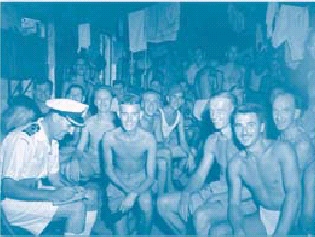
Aboard HMCS Prince Robert, Canadian soldiers return home, their health permanently affected by the privations they suffered. Many of them will not see the age of 60! (NAC - PA145521) |
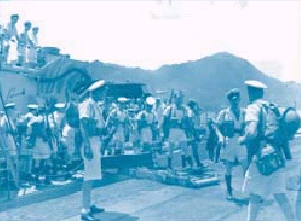
HMCS Prince Robert reaches Kowloon on 30 August 1945. In the days following, Canadian sailors capture the commanding officer and guards of the prison camp and maintain order in the city of Kowloon. (National Archives of Canada - PA 114810) |
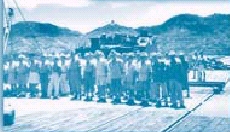
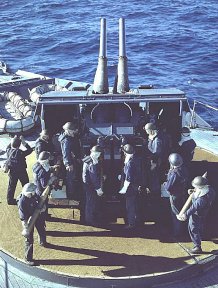 .
.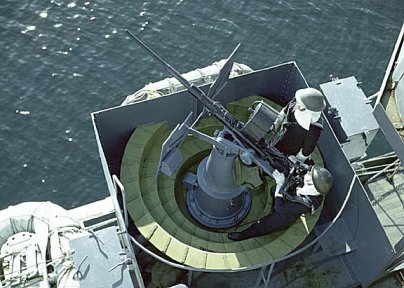
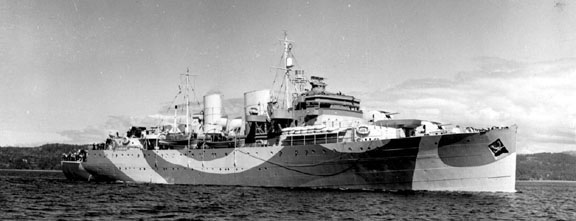
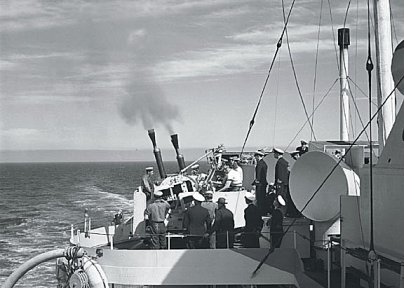
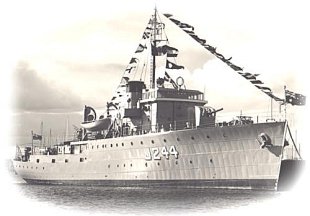
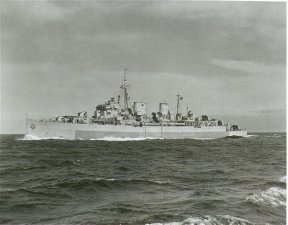
Prince Robert excerpt from the
Home Page of HMAS Castlemaine World War 2 Minesweeper
http://www.hmascastlemaine.com/
Castlemaine in company with HMAS's Wagga and Strahan departed for Subic Bay in the Philippines for refuelling and stores, arriving on the 24th. reporting to the Senior Officer 6th Submarine Flotilla in HMS Maidstone.The corvettes were to form part of the Australian Minesweeping Flotilla, attached to the British Forces Task Force 111.2 forming at Subic Bay.
Consisting of HMAS's Mildura, (Senior Officer, Lt.- Cdr. Little. Royal Australian Navy R), Castlemaine, Bathurst, Broome, Fremantle, Stawell, Strahan, and Wagga. the ships were to sweep the entrance to Hong Kong Harbour ahead of a British Force to take over the colony from the Japanese.
This was a scratch fleet of minesweepers, made up of ships that were close at hand, some of them only had Oropesa Gear, others only LL Sweeps. Most of the ships had been on other duties for so long and had to spend the next few days relearning minesweeping. Castlemaine was one of the ships that had a full set of minesweeping equipment still on board, comprising, Oropesa Gear for contact mines, LL Sweeps for magnetic mines and S.A. Type C oscillator for acoustic mines.
Finally on the 27th August, the group consisting of HMAS's Mildura (Senior Officer, Lt. Cdr. Little) Castlemaine, Bathurst, Broome, Fremantle, Strahan, and Wagga departed Subic Bay for Hong Kong leaving HMAS Stawell at Subic Bay as British Liaison Officer for the port.
Accompanying the Minesweepers were HMS Maidstone (Submarine Mother Ship), 7 submarines of the 8th Submarine Flotilla and the Anti-Aircraft Cruiser HMCS Prince Robert.
Arriving off Tamken Island at 0600 hrs on the 29th, the flotilla commenced sweeping operations, of the 36 mile long channel HMAS's Mildura, Bathurst and Castlemaine taking line abreast, with sweeps out ahead of the fleet. Astern came the HMS Maidstone and the HMCS Prince Robert, with the submarine flotilla in two lines to port and starboard, and the four remaining corvettes bringing up the rear. As night fell the fleet anchored in Joss Bay, Tamkan Island.
The following morning sweeping operations were recommenced towards the entrance of Hong Kong, with all the corvettes out ahead of the British Fleet that was now appearing on the horizon, commanded by Admiral Harcourt in the cruiser HMS Swiftsure. As the corvettes closed the entrance to Tathong Channel, the coastal guns could be seen through binoculars, with some of the Japanese soldiers standing around them. After sweeping four laps of 3 miles through the Tathong Channel, it was declared safe from mines, and the HMS Kempenfelt followed by HMS Swiftsure (Admiral Harcourt) and the rest of the fleet entered Hong Kong harbour with the corvettes following and going to anchor between the Island and Kowloon.
Despite the ravages of war the railway station and the Peninsula Hotel appeared unchanged, except for a good coat of paint, Japanese troops still wandered around the streets in small groups. Across on the island, damage could be seen from the bombings by the allies.
A landing party of 12 was put ashore and ordered to take charge of a number of prisoners from a hut used as a lookout on the Hong Kong Headland. All but one man entered the hut, where they found a Japanese with his hand on a detonator. One of the sailors shot him as he was about to press the plunger. It was later found that the hut was wired with explosives. The party took a Japanese machine gun as a souvenir. At the end of the war the gun was donated by the crew to the City of Castlemaine, and later placed in the Art Gallery. In 1980 it was re-donated to the Castlemaine and can now be seen on board.
The 2nd September was the day everyone was waiting for, the signing of the official surrender of Japan, on board the USS Missouri in Tokyo Bay. The Royal Australian Navy was represented by Commodore J.R. Collins, also present were the corvettes HMAS's Pirie, Ipswich, Cessnock and Ballarat.
HMCS PRINCE ROBERT UPDATE
CFB Esquimalt Naval & Military Museum

Charles T. Beard was born in Ottawa, Ontario in 1890. At the age of 17 he left his native land to pursue a maritime career in Great Britain. This was to be the start of a long and distinguished naval career. During his lifetime, Beard served with 30 different ships.After completing two years of service aboard the Merchant Training ship Conway, Beard returned to Canada to join several different fisheries patrol vessels including the Kestrel and Canada. He became a member of the Royal Naval Reserve on March 4, 1909 after which he spent a short time in HMS Algerine while she was stationed at Esquimalt.
On October 21, 1910 he joined the Royal Canadian Navy as a midshipman. A great part of his early naval career was spent with the Royal Navy. In 1922 he became Senior Naval Officer, Esquimalt and the Captain of Naden. He later held various posts at Headquarters including Director of Naval Reserves and also Director of Naval Operations. In 1936 he was once again at Naden as Commanding Officer as well as Commander of the Dockyard. Upon retirement, he distinguished himself in civilian life by representing Esquimalt as an MLA for 6 years.
Beard's most notable command was his last. He was called out of retirement at the beginning of the Second World War and was the first to take command of HMCS Prince Robert. The Prince Robert was a former passenger vessel that was converted and commissioned as an auxiliary cruiser in 1940. Her first mission was to help reinforce a blockade off the Mexican coast that was attempting to prevent enemy merchant raiders from sailing. After dark while on patrol off Manzanillo on September 25th, the lookouts spotted a large ship coming out. Beard kept Prince Robert to the south and unobserved, waiting until the other ship cleared the port. The merchantman was tracked for a mile astern until both were in international waters. Then Prince Robert closed on the other vessel and illuminated her port quarter. The enemy vessel, Weser, was taken completely by surprise, and before her crew could scuttle her she was boarded. A small prize crew sailed Weser back to Esquimalt.
Commander Beard's command of the Prince Robert was short-lived as he was forced into retirement again due to ill health. He died on November 21, 1948 and was buried with full military honours.
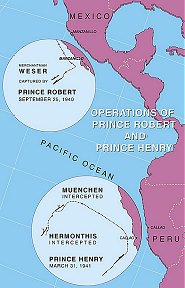 |
 |
SS VANCOUVER ISLAND was actually the former 9,472 ton German merchantman WESER, intended as a supply ship for the surface raider ORION. The WESER had been captured September 25, 1940, off the coast of Mexico by the AMC, HMCS PRINCE ROBERT. In a strange twist of fate and while sailing as the Canadian registered VANCOUVER ISLAND, she was torpedoed October 15, 1940, in the mid-North Atlantic by U558. There were no survivors among her 65 crew members, 32 passengers and 8 DEMS gunners
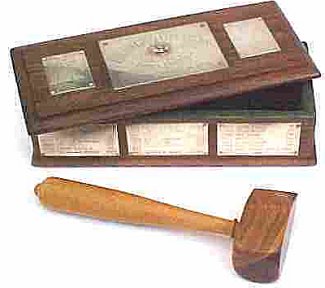 |
The
Golden Gavel Speech Contest is an annual event sponsored by the Golden
Gavel Committee. The purpose of the contest is to encourage residents of
Vancouver Island to become involved in public speaking through friendly
competition. The Golden Gavel trophy is, in itself, an historic object.
Crafted immediately after the Second World War, the materials came from
the ship, HMCS PRINCE ROBERT. The craftsman, Harvey Phillips, used
mahogany from one of the ship's cabins to form the case, or "casket". The
gavel itself is turned from lignum vitae, the "wood of life". Being extremely
hard, and containing an abundance of natural oils, this wood was used to
form the steering bearing casings on ships. These materials have been beautifully
crafted to form the Golden Gavel trophy, honoring past and present winners
of this contest.
To learn more about HMCS Prince Robert site:
|
It was November, 1941 and almost two thousand Canadian soldiers were on their way to Hong Kong. Canada had already been at war with Germany for two disastrous years. Now Japan was threatening to invade the South East Asian Colonies of America, Britain and Holland. We were a token force, sent over in the hope of giving Japan second thoughts, a bluff that did not work. I was the youngest rifleman (private soldier) in The Royal Rifles of Canada, 1st Battalion from Quebec City, who along with The Winnipeg Grenadiers and some brigade staff, were destined to be the first Canadian soldiers to see action in World War II. We were crammed below decks in the “M.V.Awatea”, owned by The Canadian-Australasian Shipping Co., that in happier days had been an inter-city ferry in Australasia as well as in the trans-Pacific trade. It had only recently been converted into a troopship. Other ranks were slung in hammocks over the mess tables deep in the bowels of the ship. They bitched about the monotonous diet of mutton and griped about the luxurious quarters of the officers in privileged possession of the exclusive and finely appointed saloons. There had been a near riot the night before we sailed over the appalling difference in accommodation. Only the genuine desire of most of us to go overseas and into action prevented more serious outbreaks. This seems hard to believe now, but that was the way it was. We wanted to go to war. One company of the Royal Rifles was on the escort vessel the H.M.C.S. Prince Robert. They had much better food, but because of the ship’s smaller size and constant roll, most were too seasick to enjoy it. To escape the stale air and dull chatter at night I used to steal up on deck, to lie wrapped in a blanket under the tropical skies. Daybreak brought flying fish, dolphins, the clean swish of the bow cutting through the sea. I remember it as clearly as if it were yesterday.
Excert from a letter published in the
Hong Kong Veterans Commemorative Association SiteJames MacMillan wrote: The Royal Rifles entrained at Valcartier, Quebec on October 23rd and we arrived at dockside Vancouver on October 27th, 1941. That day we were joined by the Winnipeg Grenadiers and a Headquarters contingent which together became known as FORCE C. ...The sea portion of our trip involved two vessels – the New Zealand Liner Awatea and the converted cruiser HMCS Prince Robert. “C” Company of the Rifles was assigned to the Prince Robert, everyone else boarded the Awatea. We sailed from Vancouver that evening and arrived in Hong Kong on November 16th, having made brief stops enroute at Honolulu and Manila. . . . At Hong Kong we were stationed at Camp Sham-shui-po which is in Kowloon on the main land, but we were only there two weeks. On December 1st, the regiment moved to the island to take up defensive positions fearing an attack from the sea (shades of Singapore). The Japanese came overland. So the companies became separated.
Very few Canadian television series and associated books have produced the furore generated by The Valour and the Horror. Outraged veterans' groups have denounced the CBC, the script writers, and the authors for denigrating Canada's wartime role.
. . . Context, as they say, is everything, and context was what the film lacked.
. . . The book in every respect is even worse. One of the authors is the wife of the co-producer; the qualifications of the other are nowhere evident. Readers will realize they are in serious trouble when in the first few pages the date Canada went to war is given incorrectly. Thereafter names, titles, ranks, and military organization are thoroughly mixed up. Bomber Harris is repeatedly labelled an `air vice marshall' - with the spelling error repeated consistently. The armed merchant cruiser HMCS PRINCE ROBERT is called a destroyer. The British forces in Hong Kong, we are told, were organized into two battalions of 10,000. All airmen in Bomber Command had a batman. And on and on.
A Prince Robert related story
from Robert Buchanan of Calgary that appeared in Legion MagazineIn 1942, Buchanan was serving on Her Majesty's Canadian Ship Haro out of Esquimalt, B.C., towing the target for practice-shooting by HMCS Prince David and HMCS Prince Robert in Nanoose Bay, north of Nanaimo. Granted a few hours shore leave, Buchanan and two shipmates headed to Nanaimo for the odd "wet" and a few dances. They were due back on board ship by midnight. Like sailors the world over, the three men were enjoying themselves so much that they forgot all about the time until they suddenly realized it was almost midnight. There they were, 15 miles from the ship and without enough money between them to take a taxi. So they headed out into the pouring rain to hitchhike.After half a dozen cars passed without stopping they thought the problem might be that there were three of them. So Buchanan suggested the other two should sit by the side of the road and he would do the thumbing. Sure enough, the next car stopped, Buchanan called his shipmates, and the three of them piled into the back seat. Imagine their stunned surprise to see Haro's lieutenant driving the car. Not much was said, but the next morning the three hitchhikers were paraded before the man who had picked them up and were punished with seven days stoppage of leave and pay. The fun evening ended up being quite expensive.
http://www.multied.com/Navy/NavyLinks.html
http://www.speakability.org/gavel/overview.htm
http://www.accessweb.com/users/mconstab/others.htm
http://cdnarmy.ca/links/canlinks.html
http://canadaatwar.tripod.com/links.html
Prince Robert to the Rescue!
http://www.navres.forces.ca/HQ-QG/activite/encre/pdf/encre-2002/03/PagesseulesA/Page_18A.pdf
PROJECT PRIDE SITE
http://www.navy.dnd.ca/
Home Page of HMAS Castlemaine World War 2 Minesweeper
http://www.hmascastlemaine.com/
Friends of Canadian Broadcasting: War Correspondents
http://www.friendscb.org/calendar/1999/march.htm
Legion Magazine
http://www.legionmagazine.com/features/humourhunt/01-03.asp
The Valour and the Horror Review
http://www.utpjournals.com/product/chr/742/horror12.html
uboat.net ~ RCN Fighting the U Boats
http://uboat.net/allies/ships/rcn_victories.htm
C.S. Restorer
http://adams.patriot.net/~eastlnd2/rj/res/Restorer.htm
The Royal Canadian Navy: 1910-1950 ~ School Project
http://www.yesnet.yk.ca/schools/projects/canadianhistory/rcn/pwp1.html
HMCS PRINCE DAVID
http://www.navalmuseum.ab.ca/david.html
PRINCE Class
http://www.hazegray.org/navhist/canada/ww2/prince/
CFB Esquimalt Naval & Military Museum
http://www.navalandmilitarymuseum.org/resource/Resources_Frame.html?Beard.html&1
Weser
http://www.naval.ca/article/griffin/anavalofficerswar_ep3_byanthonygriffin.html
http://www.red-rooster.co.uk/ships/ship.htm
http://www.coulthart.com/ww2.html
|
SHORT BURSTS Ex-Air Gunners Association Monthly e-Zine |
|
As You Were . . . Tribute Webzines |
Hillman WWII Tributes www.hillmanweb.com/war |
Ex-Air Gunners Association Magazines |
![]()
![]()
![]()
Webmaster:
William G. Hillman
BILL
& SUE-ON HILLMAN ECLECTIC STUDIO
Editor and Webmaster Bill Hillman
~ Copyright 1996-2021
